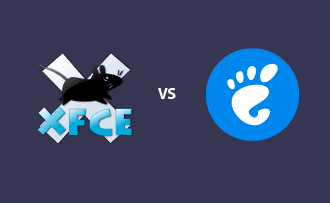Managing End-of-Life Operating Systems: Risks and Solutions
08:59, 22.09.2025
Operating systems (OS) are the backbone of modern IT infrastructure. However, every OS eventually reaches its end-of-life (EOL) phase. This means the vendor no longer provides updates, support, or security patches. While running an EOL operating system may seem cost-effective initially, it introduces significant risks. In this article, we’ll explore the challenges of managing EOL operating systems and provide practical solutions, including how younger distributions like CentOS Stream can help organizations stay secure and efficient.
What Is an End-of-Life Operating System?
An operating system enters the EOL phase when the vendor ceases its support. For example, CentOS 8 reached EOL in December 2021, leaving organizations using this version vulnerable to unpatched security flaws. Without ongoing updates, these systems are exposed to cyberattacks, incompatibility issues, and operational instability.
Risks of Using EOL Operating Systems
- Security Vulnerabilities
EOL systems no longer receive security updates. Hackers exploit known vulnerabilities, leaving your data and infrastructure at risk. Example: If a critical exploit is discovered in an EOL OS, it remains unpatched, creating a permanent security hole. - Compliance Issues
Many industries require compliance with regulations like GDPR or HIPAA. Running EOL systems can lead to legal penalties if they fail to meet security standards. - Incompatibility
Modern applications and hardware may not support outdated OS versions, leading to performance issues or outright failures. - Operational Downtime
EOL systems are prone to instability. Without vendor support, resolving unexpected problems can take much longer and require specialized expertise.
Solutions for Managing EOL Operating Systems
- Upgrade to a Supported Version
Upgrading to a newer, supported OS version is the most straightforward solution. For example, organizations using CentOS 8 can transition to CentOS Stream, a rolling-release distribution that offers continuous updates. - Migrate to Alternatives If the current OS no longer aligns with your needs, consider migrating to alternatives like Rocky Linux or AlmaLinux, which are community-driven replacements for CentOS.
- Virtualization and Containerization
Isolate EOL systems in virtual machines (VMs) or containers to limit their exposure to threats. This is a temporary solution and should be coupled with plans to migrate to a supported OS. - Extended Support Services
Some vendors and third-party companies offer extended support for EOL systems. These services provide security patches and assistance while you plan your migration. - Proactive Monitoring and Patching
Use tools to monitor EOL systems for vulnerabilities. While patches won’t be available, identifying potential risks allows you to apply mitigations where possible.
Why CentOS Stream Is a Strong Option
CentOS Stream, introduced as a rolling-release distribution, acts as a preview of the next version of Red Hat Enterprise Linux (RHEL). It provides:
- Continuous Updates Unlike traditional CentOS, Stream receives frequent updates, making it more secure and adaptable to modern IT needs.
- Developer Focus CentOS Stream allows developers to test and validate features before they are released in RHEL.
- Community Support It has an active community, making it a strong choice for those familiar with CentOS.
While the transition from CentOS Linux to CentOS Stream may require some adjustments, it offers a stable, supported, and forward-looking platform.
Conclusion
Managing EOL operating systems is a critical task for maintaining security, compliance, and performance. Ignoring EOL risks can lead to costly consequences, but solutions like upgrading to supported versions, migrating to alternatives, or leveraging virtualization can mitigate these issues.
For organizations seeking a reliable and modern OS, CentOS Stream offers a future-proof alternative that combines stability with ongoing updates. By staying proactive and planning ahead, you can ensure your IT infrastructure remains secure and efficient, even as operating systems evolve.


